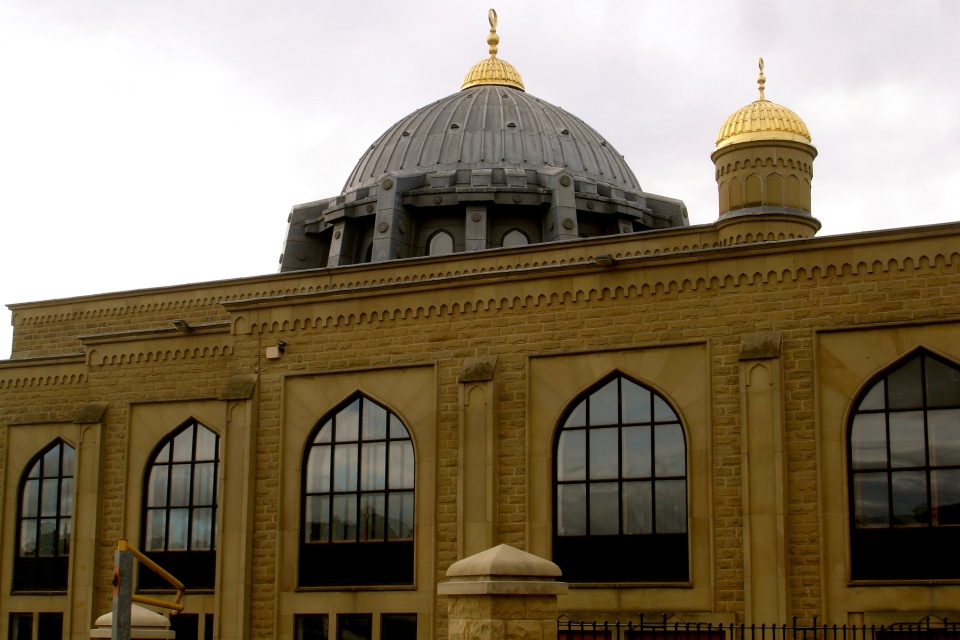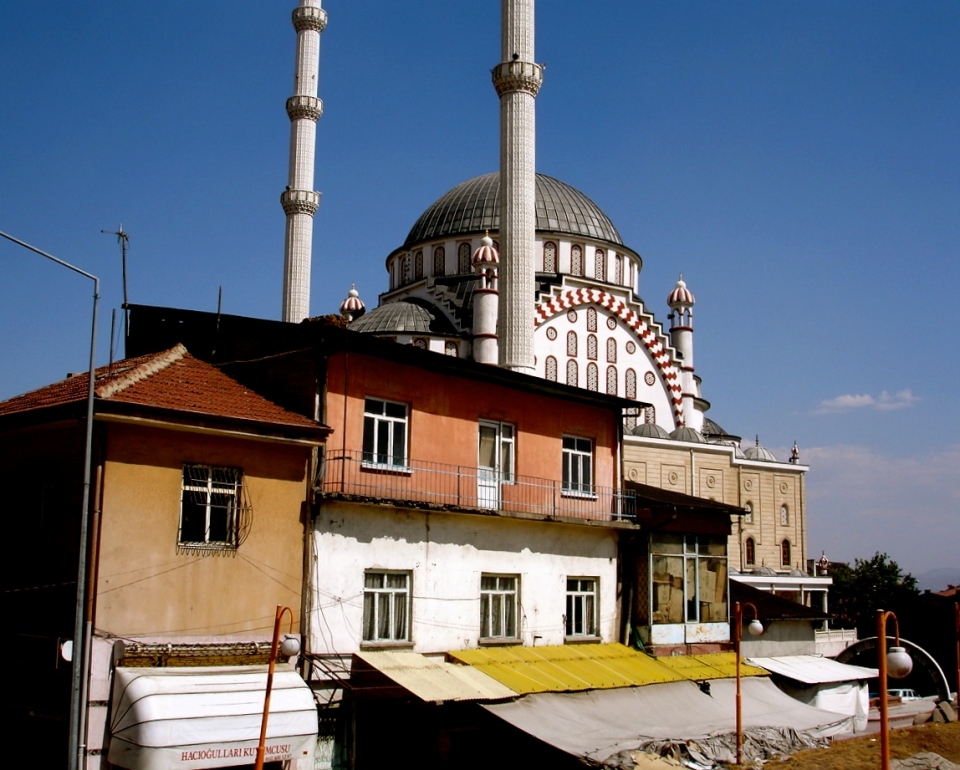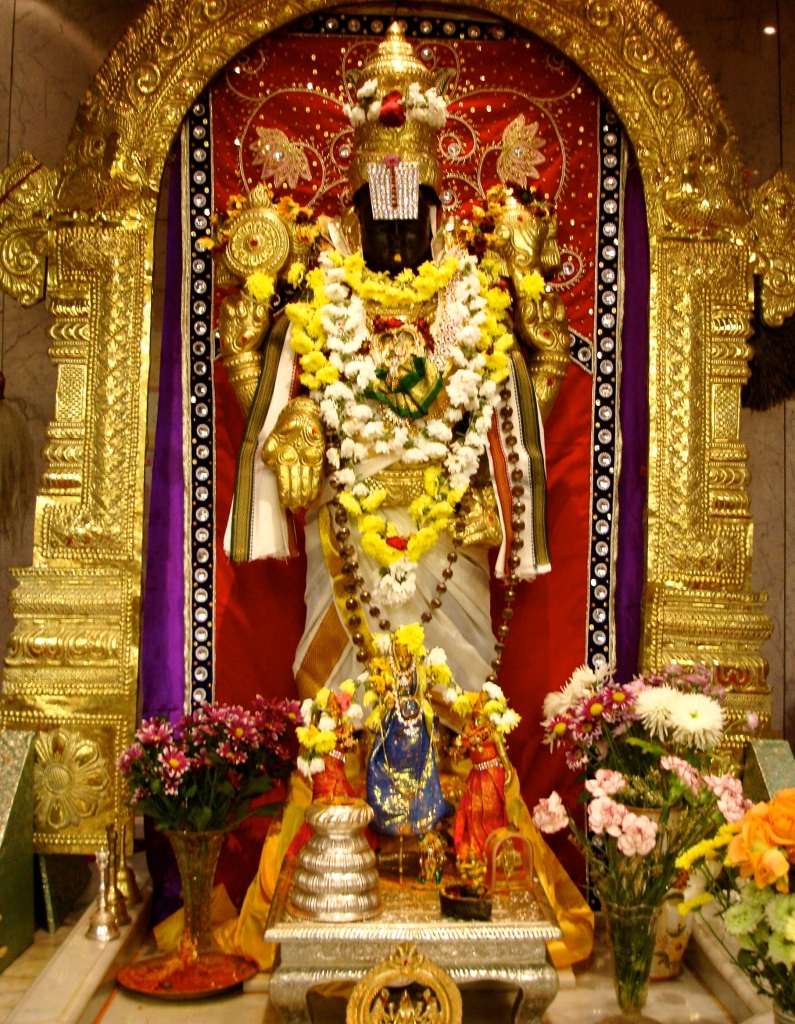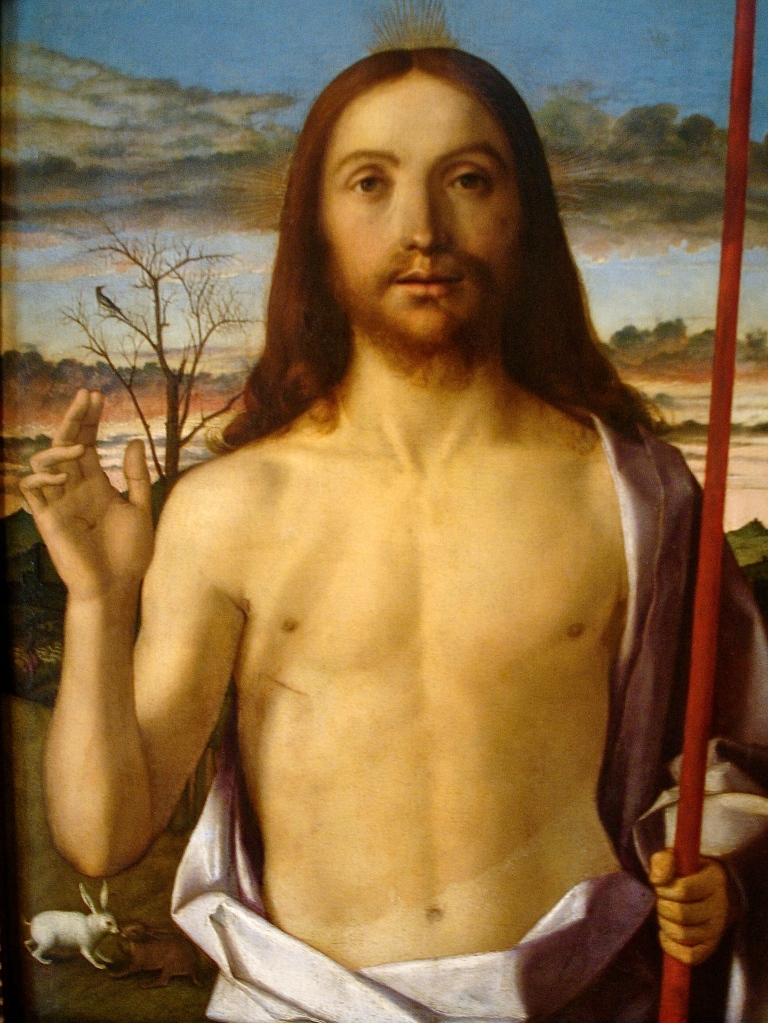To conclude the discussion about whether the Qur’an can be regarded as the uncorrupted word of God/Allah, here is a long article first published in 1999 that more thoroughly examines what “The New York Times” article addressed in the previous post. Sections in bold are the ones that are the most enlightening/important.
“The Atlantic”, January 1999. Toby Lester.
IN 1972, during the restoration of the Great Mosque of Sanaa in Yemen, labourers working in a loft between the structure’s inner and outer roofs stumbled across a remarkable gravesite, although they did not realise it at the time. Their ignorance was excusable: mosques do not normally house graves, and this site contained no tombstones, no human remains, no funereal jewellery. It contained nothing more, in fact, than an unappealing mash of old parchment and paper documents – damaged books and individual pages of Arabic text, fused together by centuries of rain and dampness, gnawed into over the years by rats and insects. Intent on completing the task at hand, the labourers gathered up the manuscripts, pressed them into some 20 potato sacks and set them aside on the staircase of one of the mosque’s minarets, where they were locked away – and where they would probably have been forgotten once again, were it not for Qadhi Ismail al-Akwa, then the president of the Yemeni Antiquities Authority, who realised the potential importance of the find.
Al-Akwa sought international assistance in examining and preserving the fragments, and in 1979 managed to interest a visiting German scholar, who in turn persuaded the German government to organise and fund a restoration project. Soon after the project began, it became clear that the hoard was a fabulous example of what is sometimes referred to as a “paper grave” – in this case, the resting place for, among other things, tens of thousands of fragments from close to a thousand different parchment codices of the Koran, the Muslim holy scripture. In some pious Muslim circles it is held that worn-out or damaged copies of the Koran must be removed from circulation; hence the idea of a grave, which both preserves the sanctity of the texts being laid to rest and ensures that only complete and unblemished editions of the scripture will be read.
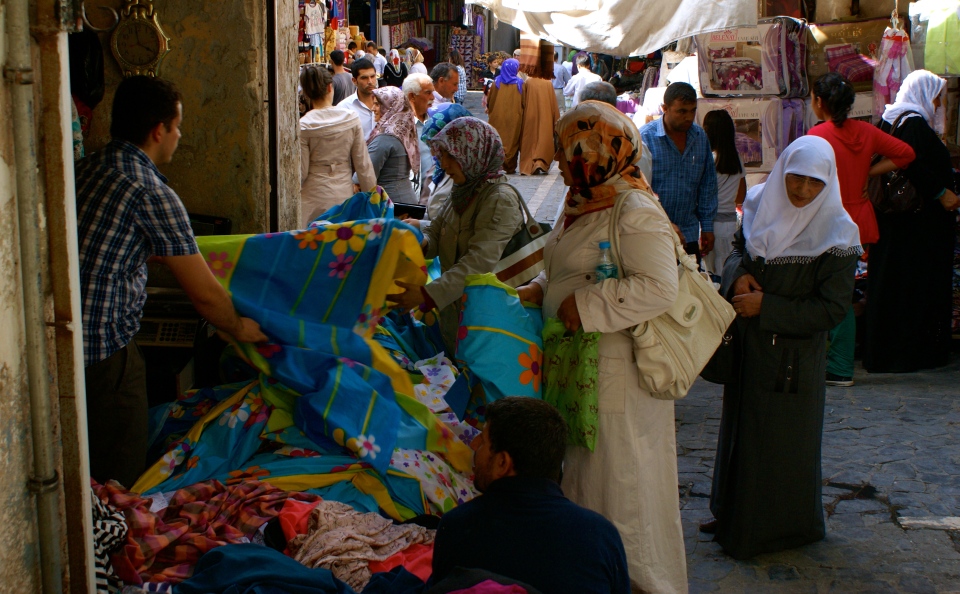
Urfa, Turkey
Some of the parchment pages in the Yemeni hoard seemed to date back to the seventh and eighth centuries, or Islam’s first two centuries – they were fragments, in other words, of perhaps the oldest Korans in existence. What’s more, some of the fragments revealed small but intriguing aberrations from the standard koranic text. Such aberrations, though not surprising to textual historians, are troublingly at odds with the orthodox Muslim belief that the Koran as it has reached us today is quite simply the perfect, timeless and unchanging word of God.
The mainly secular effort to reinterpret the Koran – in part based on textual evidence such as that provided by the Yemeni fragments – is disturbing and offensive to many Muslims, just as attempts to reinterpret the Bible and the life of Jesus are disturbing and offensive to many conservative Christians. Nevertheless, there are scholars, Muslims among them, who feel that such an effort, which amounts essentially to placing the Koran in history, will provide fuel for an Islamic revival of sorts – a reappropriation of tradition, a going forward by looking back. Thus far confined to scholarly argument, this sort of thinking can be nonetheless very powerful and – as the histories of the Renaissance and the Reformation demonstrate – can lead to major social change. The Koran, after all, is currently the world’s most ideologically influential text.
THE first person to spend a significant amount of time examining the Yemeni fragments, in 1981, was Gerd-R. Puin, a specialist in Arabic calligraphy and koranic paleography based at Saarland University in Saarbrucken, Germany. Puin, who had been sent by the German government to organise and oversee the restoration project, recognised the antiquity of some of the parchment fragments, and his preliminary inspection also revealed unconventional verse orderings, minor textual variations and rare styles of orthography and artistic embellishment. Enticing, too, were the sheets of scripture written in the rare and early Hijazi Arabic script: pieces of the earliest Korans known to exist, they were also palimpsests – versions very clearly written over even earlier, washed-off versions. What the Yemeni Korans seemed to suggest, Puin began to feel, was an evolving text rather than simply the word of God as revealed in its entirety to the Prophet Muhammad in the seventh century.
Since the early 1980s, more than 15,000 sheets of the Yemeni Korans have painstakingly been flattened, cleaned, treated, sorted and assembled; they now sit (“preserved for another thousand years,” Puin says) in Yemen’s House of Manuscripts awaiting detailed examination. That is something the Yemeni authorities have seemed reluctant to allow, however. “They want to keep this thing low profile, as we do too, although for different reasons,” Puin explains. “They don’t want attention drawn to the fact that there are Germans and others working on the Korans. They don’t want it made public that there is work being done at all, since the Muslim position is that everything that needs to be said about the Koran’s history was said a thousand years ago.”
To date, just two scholars have been granted extensive access to the Yemeni fragments: Puin and his colleague H.-C. Graf von Bothmer, an Islamic art historian also based at Saarland University. Puin and von Bothmer have published only a few tantalisingly brief articles in scholarly publications on what they have discovered in the Yemeni fragments. They have been reluctant to publish partly because until recently they were more concerned with sorting and classifying the fragments than with systematically examining them, and partly because they felt that the Yemeni authorities, if they realised the possible implications of the discovery, might refuse them further access. Von Bothmer, however, in 1997 finished taking more than 35,000 microfilm pictures of the fragments and has recently brought the pictures back to Germany. This means that soon von Bothmer, Puin and other scholars will finally have a chance to scrutinise the texts and to publish their findings freely – a prospect that thrills Puin. “So many Muslims have this belief that everything between the two covers of the Koran is just God’s unaltered word,” he says. “They like to quote the textual work that shows that the Bible has a history and did not fall straight out of the sky, but until now the Koran has been out of this discussion. The only way to break through this wall is to prove that the Koran has a history too. The Sanaa fragments will help us to do this.”
Puin is not alone in his enthusiasm. “The impact of the Yemeni manuscripts is still to be felt,” says Andrew Rippin, a professor of religious studies at the University of Calgary, who is at the forefront of koranic studies today. “Their variant readings and verse orders are all very significant. Everybody agrees on that. These manuscripts say that the early history of the koranic text is much more of an open question than many have suspected: the text was less stable, and therefore had less authority, than has always been claimed.”
By the standards of contemporary biblical scholarship, most of the questions being posed by scholars like Puin and Rippin are rather modest; outside an Islamic context, proposing that the Koran has a history and suggesting that it can be interpreted metaphorically are not radical steps. But the Islamic context – and Muslim sensibilities – cannot be ignored. “To historicise the Koran would in effect delegitimise the whole historical experience of the Muslim community,” says R. Stephen Humphreys, a professor of Islamic studies at the University of California at Santa Barbara. “The Koran is the charter for the community, the document that called it into existence. And ideally – though obviously not always in reality – Islamic history has been the effort to pursue and work out the commandments of the Koran in human life. If the Koran is a historical document, then the whole Islamic struggle of 14 centuries is effectively meaningless.”
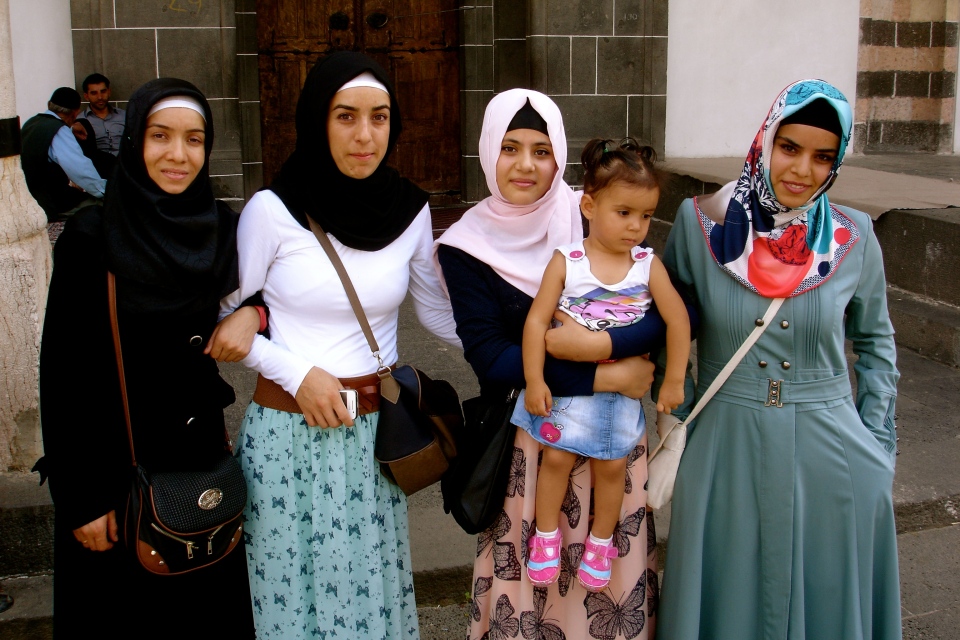
Diyarbakir, Turkey
The orthodox Muslim view of the Koran as self-evidently the word of God, perfect and inimitable in message, language, style and form, is strikingly similar to the fundamentalist Christian notion of the Bible’s “inerrancy” and “verbal inspiration” that is still common in many places today. The notion was given classic expression only a little more than a century ago by the biblical scholar John William Burgon:
The Bible is none other than the voice of Him that sitteth upon the Throne! Every Book of it, every Chapter of it, every Verse of it, every word of it, every syllable of it… every letter of it, is the direct utterance of the Most High!
Not all Christians think this way about the Bible, however, and, in fact, as the “Encyclopaedia of Islam” (1981) points out, “the closest analogue in Christian belief to the role of the Koran in Muslim belief is not the Bible, but Christ.” If Christ is the Word of God made flesh, the Koran is the Word of God made text, and questioning its sanctity or authority is thus considered an outright attack on Islam – as Salman Rushdie knows all too well.
The prospect of a Muslim backlash has not deterred the critical-historical study of the Koran, as the existence of the essays in “The Origins of the Koran” (1998) demonstrate. Even in the aftermath of the Rushdie affair the work continues. In 1996, the koranic scholar Gunter Luling wrote in “The Journal of Higher Criticism” about “the wide extent to which both the text of the Koran and the learned Islamic account of Islamic origins have been distorted, a deformation unsuspectingly accepted by Western Islamicists until now.” In 1994, the journal “Jerusalem Studies in Arabic and Islam” published a posthumous study by Yehuda D. Nevo of the Hebrew University in Jerusalem detailing seventh and eighth century religious inscriptions on stones in the Negev Desert which, Nevo suggested, pose “considerable problems for the traditional Muslim account of the history of Islam.” That same year, and in the same journal, Patricia Crone, a historian of early Islam currently based at the Institute for Advanced Study in Princeton, New Jersey, published an article in which she argued that elucidating problematic passages in the koranic text is likely to be made possible only by “abandoning the conventional account of how the Koran was born.” And since 1991, James Bellamy of the University of Michigan has proposed in the “Journal of the American Oriental Society” a series of “emendations to the text of the Koran” – changes that from the orthodox Muslim perspective amount to copy editing God.
Crone is one of the most iconoclastic of these scholars. During the 1970s and 1980s, she wrote and collaborated on several books – most notoriously, with Michael Cook, “Hagarism: The making of the Islamic world” (1977) – that made radical arguments about the origins of Islam and the writing of Islamic history. Among her controversial claims were suggestions that the text of the Koran came into being later than is now believed (“there is no hard evidence for the existence of the Koran in any form before the last decade of the seventh century”); that Mecca was not the initial Islamic sanctuary ([the evidence] “points unambiguously to a sanctuary in north-west Arabia… Mecca was secondary”); that the Arab conquests preceded the institutionalisation of Islam (“the Jewish messianic fantasy was enacted in the form of an Arab conquest of the Holy Land”); that the idea of the hijra, or the migration of Muhammad and his followers from Mecca to Medina in 622, may have evolved long after Muhammad died (“no seventh century source identifies the Arab era as that of the hijra”); and that the term “Muslim” was not commonly used in early Islam (“there is no good reason to suppose that the bearers of this primitive identity called themselves ‘Muslims’ [but] sources do… reveal an earlier designation of the community [which] appears in Greek as ‘Magaritai’ in a papyrus of 642, and in Syriac as ‘Mahgre’ or ‘Mahgraye’ from as early as the 640s”).
“Hagarism: The making of the Islamic world” came under immediate attack, from Muslim and non-Muslim scholars alike, for its heavy reliance on hostile sources (“This is a book,” the authors wrote, “based on what from any Muslim perspective must appear an inordinate regard for the testimony of infidel sources”). Crone and Cook have since backed away from some of its most radical propositions – such as, for example, that the Prophet Muhammad lived two years longer than the Muslim tradition claims he did, and that the historicity of his migration to Medina is questionable. But Crone has continued to challenge both Muslim and Western orthodox views of Islamic history. In “Meccan Trade and the Rise of Islam” (1987), she made a detailed argument challenging the prevailing view among Western (and some Muslim) scholars that Islam arose in response to the Arabian spice trade.
Puin’s current thinking about the Koran’s history partakes of this contemporary revisionism. “My idea is that the Koran is a kind of cocktail of texts that were not all understood even at the time of Muhammad,” he says. “Many of them may even be a hundred years older than Islam itself. Even within the Islamic traditions there is a huge body of contradictory information, including a significant Christian substrate; one can derive a whole Islamic anti-history from them if one wants.”
Crone defends the goals of this sort of thinking. “The Koran is a scripture with a history like any other – except that we don’t know this history and tend to provoke howls of protest when we study it. Nobody would mind the howls if they came from Westerners, but Westerners feel deferential when the howls come from other people: who are you to tamper with their legacy? But we Islamicists are not trying to destroy anyone’s faith.”
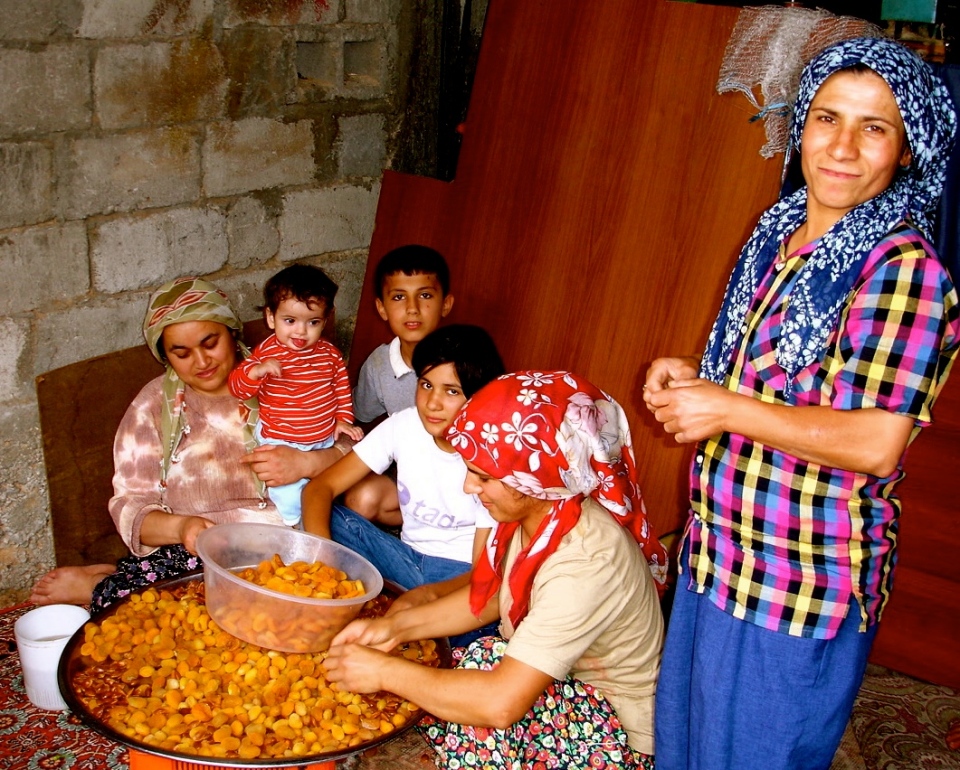
Gunduzbey, near Malatya, Turkey
Not everyone agrees with that assessment – especially since Western koranic scholarship has traditionally taken place in the context of an openly declared hostility between Christianity and Islam (indeed, the broad movement in the West over the past two centuries to “explain” the East, often referred to as Orientalism, has in recent years come under fire for exhibiting similar religious and cultural biases). The Koran has seemed, for Christian and Jewish scholars particularly, to possess an aura of heresy; the nineteenth century Orientalist William Muir, for example, contended that the Koran was one of “the most stubborn enemies of Civilisation, Liberty and the Truth which the world has yet known.” Early Soviet scholars, too, undertook an ideologically motivated study of Islam’s origins, with almost missionary zeal: in the 1920s and in 1930 a Soviet publication titled “Ateist” ran a series of articles explaining the rise of Islam in Marxist-Leninist terms. In “Islam and Russia”(1956), Ann K. S. Lambton summarised much of this work and wrote that several Soviet scholars had theorised that “the motive force of the nascent religion was supplied by the mercantile bourgeoisie of Mecca and Medina;” that a certain S. P. Tolstov had held that “Islam was a social-religious movement originating in the slave-owning, not feudal, form of Arab society;” and that N. A. Morozov had argued that “until the Crusades, Islam was indistinguishable from Judaism and… only then did it receive its independent character, while Muhammad and the first Caliphs are mythical figures.” Morozov appears to have been a particularly flamboyant theorist. Lambton wrote that he also argued, in his book “Christ” (1930), that “in the Middle Ages, Islam was merely an off-shoot of Arianism evoked by a meteorological event in the Red Sea area near Mecca.”
Not surprisingly, then, given the biases of much non-Islamic critical study of the Koran, Muslims are inclined to dismiss it outright. A particularly eloquent protest came in 1987, in the “Muslim World Book Review”, in a paper titled “Method Against Truth: Orientalism and Qur’anic Studies” by the Muslim critic S. Parvez Manzoor. Placing the origins of Western koranic scholarship in “the polemical marshes of medieval Christianity” and describing its contemporary state as a “cul-de-sac of its own making,” Manzoor orchestrated a complex and layered assault on the entire Western approach to Islam. He opened his essay in a rage:
The Orientalist enterprise of qur’anic studies, whatever its other merits and services, was a project born of spite, bred in frustration and nourished by vengeance: the spite of the powerful for the powerless, the frustration of the “rational” towards the “superstitious” and the vengeance of the “orthodox” against the “non-conformist.” At the greatest hour of his worldly-triumph, the Western man, coordinating the powers of the State, Church and Academia, launched his most determined assault on the citadel of Muslim faith. All the aberrant streaks of his arrogant personality – its reckless rationalism, its world-domineering fantasy and its sectarian fanaticism – joined in an unholy conspiracy to dislodge the Muslim scripture from its firmly entrenched position as the epitome of historic authenticity and moral unassailability. The ultimate trophy that the Western man sought by his dare-devil venture was the Muslim mind itself. In order to rid the West forever of the “problem” of Islam, he reasoned, Muslim consciousness must be made to despair of the cognitive certainty of the Divine message revealed to the Prophet. Only a Muslim confounded of the historical authenticity or doctrinal autonomy of the qur’anic revelation would abdicate his universal mission and hence pose no challenge to the global domination of the West. Such, at least, seems to have been the tacit, if not the explicit, rationale of the Orientalist assault on the Qur’an.
Despite such resistance, Western researchers with a variety of academic and theological interests press on, applying modern techniques of textual and historical criticism to the study of the Koran. That a substantial body of this scholarship now exists is indicated by the recent decision of the European firm Brill Publishers – a long-established publisher of such major works as “The Encyclopedia of Islam” and “The Dead Sea Scrolls Study Edition” – to commission the first-ever “Encyclopedia of the Qur’an”. Jane McAuliffe, a professor of Islamic studies at the University of Toronto and the general editor of the encyclopedia, hopes that it will function as a “rough analogue” to biblical encyclopedias and will be “a turn-of-the-millennium summative work for the state of koranic scholarship.” Articles for the first part of the encyclopedia are currently being edited and prepared for publication later this year.
The “Encyclopedia of the Qur’an” will be a truly collaborative enterprise carried out by Muslims and non-Muslims, and its articles will present multiple approaches to the interpretation of the Koran, some of which are likely to challenge traditional Islamic views – thus disturbing many in the Islamic world, where the time is decidedly less ripe for a revisionist study of the Koran.

Children in Urfa, eastern Turkey
The plight of Nasr Abu Zaid, an unassuming Egyptian professor of Arabic who sits on the encyclopedia’s advisory board, illustrates the difficulties facing Muslim scholars trying to reinterpret their tradition. “The Koran is a text, a literary text, and the only way to understand, explain and analyse it is through a literary approach,” Abu Zaid says. “This is an essential theological issue.”
For expressing views like this in print – in essence, for challenging the idea that the Koran must be read literally as the absolute and unchanging word of God – Abu Zaid was in 1995 officially branded an apostate, a ruling that in 1996 was upheld by Egypt’s highest court. The court then proceeded, on the grounds of an Islamic law forbidding the marriage of an apostate to a Muslim, to order Abu Zaid to divorce his wife, Ibtihal Yunis (a ruling that the shocked and happily married Yunis described at the time as coming “like a blow to the head with a brick”).
Abu Zaid steadfastly maintains that he is a pious Muslim, but contends that the Koran’s manifest content – for example, the often archaic laws about the treatment of women for which Islam is infamous – is much less important than its complex, regenerative and spiritually nourishing latent content. The orthodox Islamic view, Abu Zaid claims, is stultifying; it reduces a divine, eternal, and dynamic text to a fixed human interpretation with no more life and meaning than “a trinket… a talisman… or an ornament.”
For a while, Abu Zaid remained in Egypt and sought to refute the charges of apostasy, but, in the face of death threats and relentless public harassment, he fled with his wife from Cairo to Holland calling the whole affair “a macabre farce.” Sheikh Youssef al-Badri, the cleric whose preachings inspired much of the opposition to Abu Zaid, was exultant. “We are not terrorists; we have not used bullets or machine guns, but we have stopped an enemy of Islam from poking fun at our religion… No one will even dare to think about harming Islam again.”
Abu Zaid seems to have been justified in fearing for his life and fleeing: in 1992, the Egyptian journalist Farag Foda was assassinated by Islamists for his critical writings about Egypt’s Muslim Brotherhood, and in 1994, the Nobel Prize-winning novelist Naguib Mahfouz was stabbed for writing, among other works, the allegorical “Children of Gabalawi” (1959), a novel, structured like the Koran, that presents “heretical” conceptions of God and the Prophet Muhammad.
Deviating from the orthodox interpretation of the Koran, says the Algerian Mohammed Arkoun, a professor emeritus of Islamic thought at the University of Paris, is “a very sensitive business” with major implications. “Millions and millions of people refer to the Koran daily to explain their actions and to justify their aspirations,” Arkoun says. “This scale of reference is much larger than it has ever been before.”
Mecca sits in a barren hollow between two ranges of steep hills in the west of present-day Saudi Arabia. To its immediate west lies the flat and sweltering Red Sea coast; to the east stretches the great Rub al-Khali, or Empty Quarter – the largest continuous body of sand on the planet. The town’s setting is uninviting: the earth is dry and dusty and smoulders under a relentless sun; the whole region is scoured by hot, throbbing desert winds. Although sometimes rain does not fall for years, when it does come it can be heavy, creating torrents of water that rush out of the hills and flood the basin in which the city lies. As a backdrop for divine revelation, the area is every bit as fitting as the mountains of Sinai or the wilderness of Judea.
The only real source of historical information about pre-Islamic Mecca and the circumstances of the Koran’s revelation is the classical Islamic story about the religion’s founding, a distillation of which follows.
In the centuries leading up to the arrival of Islam, Mecca was a local Pagan sanctuary of considerable antiquity. Religious rituals revolved around the Ka’aba – a shrine, still central in Islam today, that Muslims believe was originally built by Ibrahim (known to Christians and Jews as Abraham) and his son Ismail (Ishmael). As Mecca became increasingly prosperous in the sixth century, Pagan idols of varying sizes and shapes proliferated. The traditional story has it that by the early seventh century a pantheon of some 360 statues and icons surrounded the Ka’aba (inside which were found renderings of Jesus and the Virgin Mary, among other idols).
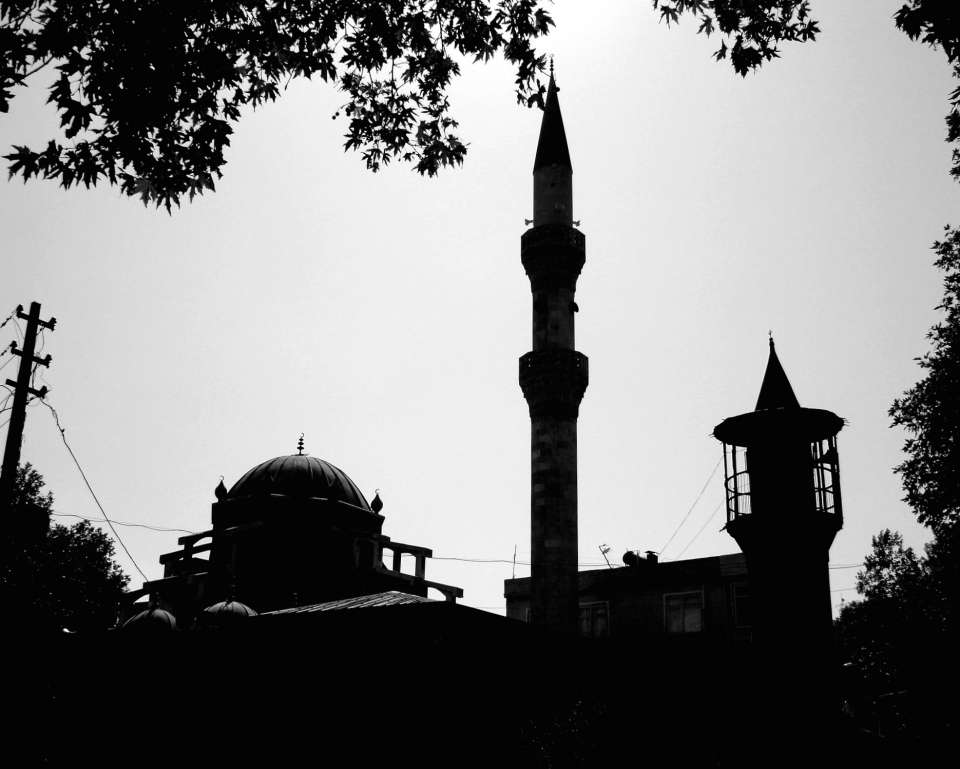
Mosque, Kahramanmaras, Turkey
Such was the background against which the first instalments of the Koran are said to have been revealed, in 610, to an affluent but disaffected merchant named Muhammad bin Abdullah. Muhammad had developed the habit of periodically withdrawing from Mecca’s Pagan squalor to a nearby mountain cave where he would reflect in solitude. During one of these retreats he was visited by the angel Gabriel – the very same angel said to have announced the coming of Jesus to the Virgin Mary in Nazareth some 600 years earlier. Opening with the command “Recite,” Gabriel made it known to Muhammad that he was to serve as the Messenger of God. Subsequently, until his death, the supposedly illiterate Muhammad received through Gabriel divine revelations in Arabic that were known as qur’an (“recitation”) and that announced, initially in a highly poetic and rhetorical style, a new and uncompromising brand of monotheism known as Islam, or “submission” (to God’s will). Muhammad reported these revelations verbatim to sympathetic family members and friends, who either memorised them or wrote them down.
Powerful Meccans soon began to persecute Muhammad and his small band of devoted followers, whose new faith rejected the Pagan core of Meccan cultural and economic life, and as a result, in 622 the group migrated some 200 miles north, to the town of Yathrib, which subsequently became known as Medina (short for Medinat al-Nabi, or City of the Prophet. This migration, known in Islam as the hijra, is considered to mark the birth of an independent Islamic community, and 622 is thus the first year of the Islamic calendar). In Medina, Muhammad continued to receive divine revelations of an increasingly pragmatic and prosaic nature, and by 630 he had developed enough support in the Medinan community to attack and conquer Mecca. He spent the last two years of his life proselytising, consolidating political power and continuing to receive revelations.
The Islamic tradition has it that, when Muhammad died in 632, the koranic revelations had not been gathered into a single book; the revelations were recorded only “on palm leaves and flat stones and in the hearts of men.” (This is not surprising: the oral tradition was strong and well established, and the Arabic script, which was written without the vowel markings and consonantal dots used today, served mainly as an aid to memorisation.) Nor was the establishment of such a text of primary concern: the Medinan Arabs – an unlikely coalition of merchants, desert nomads and agriculturalists united in a potent new faith and inspired by the life and sayings of Prophet Muhammad – were at the time pursuing a fantastically successful series of international conquests in the name of Islam. By the 640s, the Arabs possessed most of Syria, Iraq, Persia and Egypt, and 30 years later they were busy taking over parts of Europe, North Africa and Central Asia.
In the early decades of the Arab conquests, many members of Muhammad’s coterie were killed and with them died valuable knowledge of the koranic revelations. Muslims at the edges of the empire began arguing over what was koranic scripture and what was not. An army general returning from Azerbaijan expressed his fears about sectarian controversy to the Caliph Uthman (644 to 656) – the third Islamic ruler to succeed Muhammad – and is said to have entreated him to “overtake this people before they differ over the Koran the way the Jews and Christians differ over their scripture.” Uthman convened an editorial committee of sorts that carefully gathered the various pieces of scripture that had been memorised or written down by Muhammad’s companions. The result was a standard written version of the Koran. Uthman ordered all incomplete and “imperfect” collections of the koranic scripture destroyed, and the new version was quickly distributed to the major centres of the rapidly burgeoning empire.
During the next few centuries, while Islam solidified as a religious and political entity, a vast body of exegetical and historical literature evolved to explain the Koran and the rise of Islam, the most important elements of which are hadith, or the collected sayings and deeds of the Prophet Muhammad; sunna, or the body of Islamic social and legal custom; sira, or biographies of the Prophet; and tafsir, or koranic commentary and explication. It is from these traditional sources – compiled in written form mostly from the mid-eighth to the mid-tenth century – that all accounts of the revelation of the Koran and the early years of Islam are ultimately derived.
Roughly equivalent in length to the New Testament, the Koran is divided into 114 sections, known as suras, that vary dramatically in length and form. The book’s organising principle is neither chronological nor thematic – for the most part the suras are arranged from beginning to end in descending order of length. Despite the unusual structure, however, what generally surprises newcomers to the Koran is the degree to which it draws on the same beliefs and stories that appear in the Bible. God (Allah in Arabic) rules supreme: he is the all-powerful, all-knowing and all-merciful Being who has created the world and its creatures; he sends messages and laws through prophets to help guide human existence; and, at a time in the future known only to him, he will bring about the end of the world and the Day of Judgement. Adam, the first man, is expelled from Paradise for eating from the forbidden tree. Noah builds an ark to save a select few from a flood brought on by the wrath of God. Abraham prepares himself to sacrifice his son at God’s bidding. Moses leads the Israelites out of Egypt and receives a revelation on Mount Sinai. Jesus – born of the Virgin Mary and referred to as the Messiah – works miracles, has disciples and rises to heaven.
The Koran takes great care to stress this common monotheistic heritage, but it works equally hard to distinguish Islam from Judaism and Christianity. For example, it mentions prophets – Hud, Salih, Shuayb, Luqman and others – whose origins seem exclusively Arabian, and it reminds readers that it is “a Koran in Arabic for people who understand.” Despite its repeated assertions to the contrary, however, the Koran is often extremely difficult for contemporary readers – even highly educated speakers of Arabic – to understand. It sometimes makes dramatic shifts in style, voice and subject matter from verse to verse, and it assumes a familiarity with language, stories and events that seem to have been lost even to the earliest of Muslim exegetes (this is typical of a text that initially evolved in an oral tradition). Its apparent inconsistencies are easy to find: God may be referred to in the first and third person in the same sentence; divergent versions of the same story are repeated at different points in the text; and divine rulings occasionally contradict one another. In this last case the Koran anticipates criticism and defends itself by asserting the right to abrogate its own message (“God doth blot out or confirm what He pleaseth”).

Islamic calligraphy
Criticism did come. As Muslims increasingly came into contact with Christians during the eighth century, the wars of conquest were accompanied by theological polemics, in which Christians and others latched on to the confusing literary state of the Koran as proof of its human origins. Muslim scholars themselves were fastidiously cataloguing the problematic aspects of the Koran – unfamiliar vocabulary, seeming omissions of text, grammatical incongruities, deviant readings and so on. A major theological debate in fact arose within Islam in the late eighth century, pitting those who believed in the Koran as the “uncreated” and eternal word of God against those who believed in it as created in time, like anything that isn’t God himself. Under the Caliph al-Mamun (813 to 833), this latter view briefly became orthodox doctrine. It was supported by several schools of thought, including an influential one known as Mutazilism that developed a complex theology based partly on a metaphorical rather than simply literal understanding of the Koran.
By the end of the tenth century, the influence of the Mutazili school had waned, for complicated political reasons, and the official doctrine had become that of ijaz, or the “inimitability” of the Koran (as a result, the Koran has traditionally not been translated by Muslims for non-Arabic-speaking Muslims. Instead, it is read and recited in the original by Muslims worldwide, the majority of whom do not speak Arabic. The translations that do exist are considered to be nothing more than scriptural aids and paraphrases). The adoption of the doctrine of inimitability was a major turning point in Islamic history, and from the tenth century to this day, the mainstream Muslim understanding of the Koran as the literal and uncreated word of God has remained constant.
Puin speaks with disdain about the traditional willingness, on the part of Muslim and Western scholars, to accept the conventional understanding of the Koran. “The Koran claims for itself that it is ‘mubeen,’ or ‘clear,'” he says. “But if you look at it, you will notice that every fifth sentence or so simply doesn’t make sense. Many Muslims – and Orientalists – will tell you otherwise, of course, but the fact is that a fifth of the koranic text is just incomprehensible. This is what has caused the traditional anxiety regarding translation. If the Koran is not comprehensible – if it can’t even be understood in Arabic – then it’s not translatable. People fear that. And since the Koran claims repeatedly to be clear but obviously is not – as even speakers of Arabic will tell you – there is a contradiction. Something else must be going on.”
Trying to figure out that “something else” really began only in this century. “Until quite recently,” Crone, the historian of early Islam, says, “everyone took it for granted that everything the Muslims claim to remember about the origin and meaning of the Koran is correct. If you drop that assumption you have to start afresh.” This is no mean feat, of course; the Koran has come down to us tightly swathed in a historical tradition that is extremely resistant to criticism and analysis. As Crone put it in “Slaves on Horses”:
The biblical redactors offer us sections of the Israelite tradition at different stages of crystallisation, and their testimonies can accordingly be profitably compared and weighed against each other. But the Muslim tradition was the outcome, not of a slow crystallisation, but of an explosion; the first compilers were not redactors, but collectors of debris whose works are strikingly devoid of overall unity; and no particular illuminations ensue from their comparison.
Not surprisingly, given the explosive expansion of early Islam and the passage of time between the religion’s birth and the first systematic documenting of its history, Muhammad’s world and the worlds of the historians who subsequently wrote about him were dramatically different. During Islam’s first century alone a provincial band of Pagan desert tribesmen became the guardians of a vast international empire of institutional monotheism that teemed with unprecedented literary and scientific activity. Many contemporary historians argue that one cannot expect Islam’s stories about its own origins – particularly given the oral tradition of the early centuries – to have survived this tremendous social transformation intact. Nor can one expect a Muslim historian writing in ninth or tenth century Iraq to have discarded his social and intellectual background (and theological convictions) in order accurately to describe a deeply unfamiliar seventh century Arabian context. R. Stephen Humphreys, writing in “Islamic History: A Framework for Inquiry” (1988), concisely summed up the issue that historians confront in studying early Islam:
If our goal is to comprehend the way in which Muslims of the late 2nd/8th and 3rd/9th centuries (Islamic calendar/Christian calendar) understood the origins of their society, then we are very well off indeed. But if our aim is to find out “what really happened,” in terms of reliably documented answers to modern questions about the earliest decades of Islamic society, then we are in trouble.
The person who more than anyone else has shaken up koranic studies in the past few decades is John Wansbrough, formerly of the University of London’s School of Oriental and African Studies. Puin is “re-reading him now” as he prepares to analyse the Yemeni fragments. Crone says that she and Cook “did not say much about the Koran in ‘Hagarism: the making of the Islamic world’ that was not based on Wansbrough.” Other scholars are less admiring, referring to Wansbrough’s work as “drastically wrongheaded,” “ferociously opaque” and a “colossal self-deception.” But like it or not, anybody engaged in the critical study of the Koran today must contend with Wansbrough’s two main works, “Qur’anic Studies: Sources and Methods of Scriptural Interpretation” (1977) and “The Sectarian Milieu: Content and Composition of Islamic Salvation History” (1978).
Wansbrough applied an entire arsenal of what he called the “instruments and techniques” of biblical criticism – form criticism, source criticism, redaction criticism and much more – to the koranic text. He concluded that the Koran evolved only gradually in the seventh and eighth centuries, during a long period of oral transmission when Jewish and Christian sects were arguing volubly with one another well to the north of Mecca and Medina, in what are now parts of Syria, Jordan, Israel and Iraq. The reason that no Islamic source material from the first century or so of Islam has survived, Wansbrough concluded, is that it never existed.
To Wansbrough, the Islamic tradition is an example of what is known to biblical scholars as a “salvation history”: a theologically and evangelically motivated story of a religion’s origins invented late in the day and projected back in time. In other words, as Wansbrough put it in “Qur’anic Studies: Sources and Methods of Scriptural Interpretation”, the canonisation of the Koran – and the Islamic traditions that arose to explain it – involved the attribution of several, partially overlapping, collections of logia (exhibiting a distinctly Mosaic imprint) to the image of a biblical prophet (modified by the material of the Muslim evangelium into an Arabian man of God) with a traditional message of salvation (modified by the influence of rabbinic Judaism into the unmediated and finally immutable word of God).
Wansbrough’s arcane theories have been contagious in certain scholarly circles, but many Muslims, understandably, have found them deeply offensive. S. Parvez Manzoor, for example, has described the koranic studies of Wansbrough and others as “a naked discourse of power” and “an outburst of psychopathic vandalism.” But not even Manzoor argues for a retreat from the critical enterprise of koranic studies; instead, he urges Muslims to defeat the Western revisionists on the “epistemological battlefield,” admitting that “sooner or later [we Muslims] will have to approach the Qur’an from methodological assumptions and parameters that are radically at odds with the ones consecrated by our tradition.”
Indeed, for more than a century there have been public figures in the Islamic world who have attempted the revisionist study of the Koran and Islamic history – the exiled Egyptian professor Nasr Abu Zaid is not unique. Perhaps Abu Zaid’s most famous predecessor was the prominent Egyptian government minister, university professor and writer Taha Hussein. A determined modernist, Hussein in the early 1920s devoted himself to the study of pre-Islamic Arabian poetry and ended up concluding that much of that body of work had been fabricated well after the establishment of Islam in order to lend outside support to koranic mythology. A more recent example is the Iranian journalist and diplomat Ali Dashti, who, in his “Twenty-three Years: a study of the prophetic career of Mohammed” (1985), repeatedly took his fellow Muslims to task for not questioning the traditional accounts of Muhammad’s life, much of which he called “myth-making and miracle-mongering.”
Abu Zaid also cites the enormously influential Muhammad Abduh as a precursor. The nineteenth century father of Egyptian modernism, Abduh saw the potential for a new Islamic theology in the theories of the ninth century Mutazilis. The ideas of the Mutazilis gained popularity in some Muslim circles early in this century (leading the important Egyptian writer and intellectual Ahmad Amin to remark in 1936 that “the demise of Mutazilism was the greatest misfortune to have afflicted Muslims; they have committed a crime against themselves”). The late Pakistani scholar Fazlur Rahman carried the Mutazilite torch well into the present era; he spent the later years of his life, from the 1960s until his death in 1988, living and teaching in the United States, where he trained many students of Islam – both Muslims and non-Muslims – in the Mutazilite tradition.
Such work has not come without cost, however: Taha Hussein, like Nasr Abu Zaid, was declared an apostate in Egypt; Ali Dashti died mysteriously just after the 1979 Iranian revolution; and Fazlur Rahman was forced to leave Pakistan in the 1960s. Muslims interested in challenging orthodox doctrine must tread carefully. “I would like to get the Koran out of this prison,” Abu Zaid has said of the prevailing Islamic hostility to reinterpreting the Koran for the modern age, “so that once more it becomes productive for the essence of our culture and the arts, which are being strangled in our society.” Despite his many enemies in Egypt, Abu Zaid may well be making progress toward this goal: there are indications that his work is being widely, if quietly, read with interest in the Arab world. Abu Zaid says, for example, that his “The Concept of the Text” (1990) – the book largely responsible for his exile from Egypt – has gone through at least eight underground printings in Cairo and Beirut.
Another scholar with a wide readership who is committed to re-examining the Koran is Mohammed Arkoun, the Algerian professor at the University of Paris. Arkoun argued in “Lectures du Coran” (1982), for example, that “it is time [for Islam] to assume, along with all of the great cultural traditions, the modern risks of scientific knowledge,” and suggested that “the problem of the divine authenticity of the Koran can serve to reactivate Islamic thought and engage it in the major debates of our age.” Arkoun regrets the fact that most Muslims are unaware that a different conception of the Koran exists within their own historical tradition. What a re-examination of Islamic history offers Muslims, Arkoun and others argue, is an opportunity to challenge the Muslim orthodoxy from within, rather than having to rely on “hostile” outside sources. Arkoun, Abu Zaid and others hope that this challenge might ultimately lead to nothing less than an Islamic renaissance.
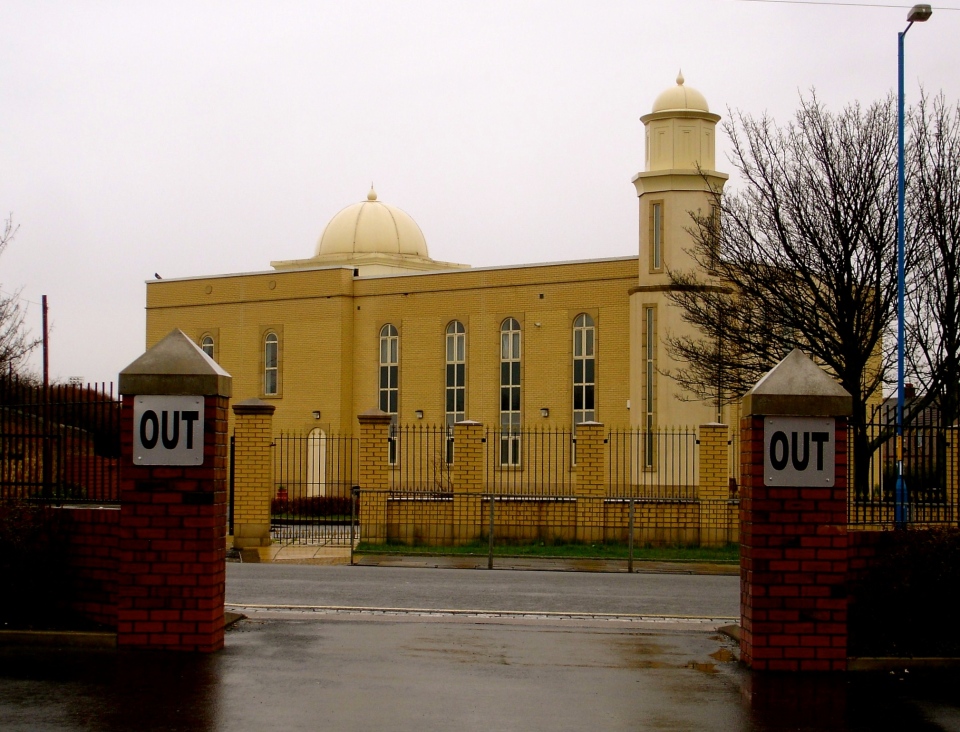
Nasir Mosque, Hartlepool, United Kingdom
The gulf between such academic theories and the daily practice of Islam around the world is huge, of course – the majority of Muslims today are unlikely to question the orthodox understanding of the Koran and Islamic history. Yet Islam became one of the world’s great religions in part because of its openness to social change and new ideas (centuries ago, when Europe was mired in its feudal Dark Ages, the sages of a flourishing Islamic civilisation opened an era of great scientific and philosophical discovery. The ideas of the ancient Greeks and Romans might never have been introduced to Europe were it not for the Islamic historians and philosophers who rediscovered and revived them). Islam’s own history shows that the prevailing conception of the Koran is not the only one ever to have existed, and the recent history of biblical scholarship shows that not all critical-historical studies of a holy scripture are antagonistic. They can instead be carried out with the aim of spiritual and cultural regeneration. They can, as Arkoun puts it, demystify the text while reaffirming “the relevance of its larger intuitions.”
Increasingly diverse interpretations of the Koran and Islamic history will inevitably be proposed in the coming decades, as traditional cultural distinctions between East, West, North and South continue to dissolve, as the population of the Muslim world continues to grow, as early historical sources continue to be scrutinised, and as feminism meets the Koran. With the diversity of interpretations will surely come increased fractiousness, perhaps intensified by the fact that Islam now exists in such a great variety of social and intellectual settings – Bosnia, Iran, Malaysia, Nigeria, Saudi Arabia, South Africa, the United States and so on. More than ever before, anybody wishing to understand global affairs will need to understand Islamic civilisation in all its permutations. Surely the best way to start is with the study of the Koran – which promises in the years ahead to be at least as contentious, fascinating and important as the study of the Bible has been in this century.
